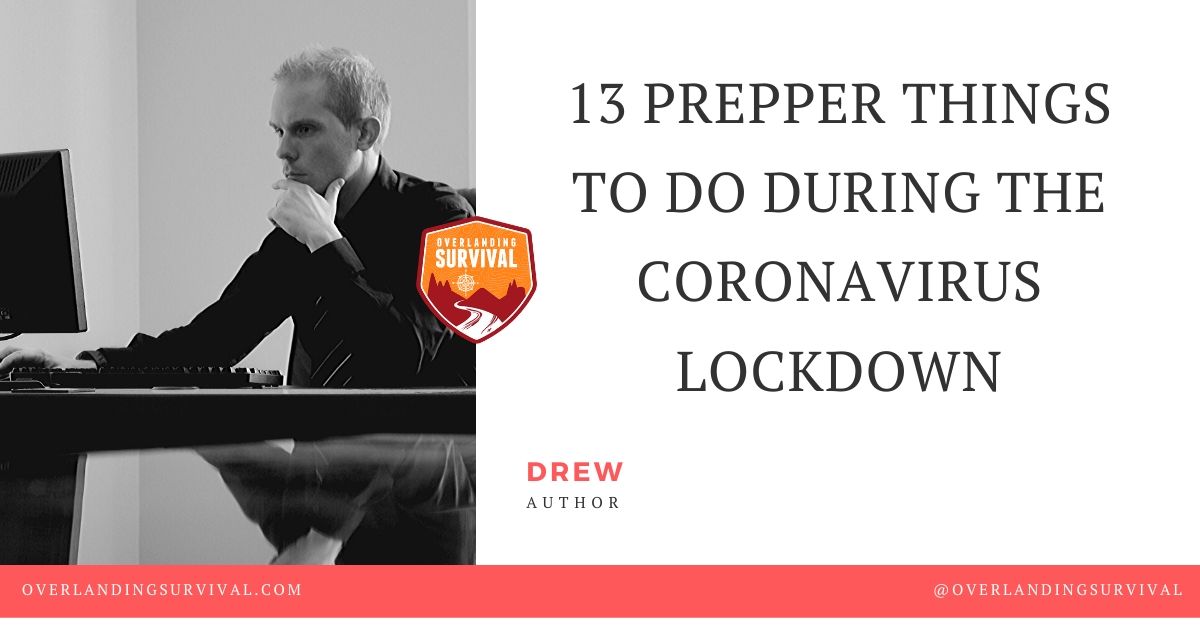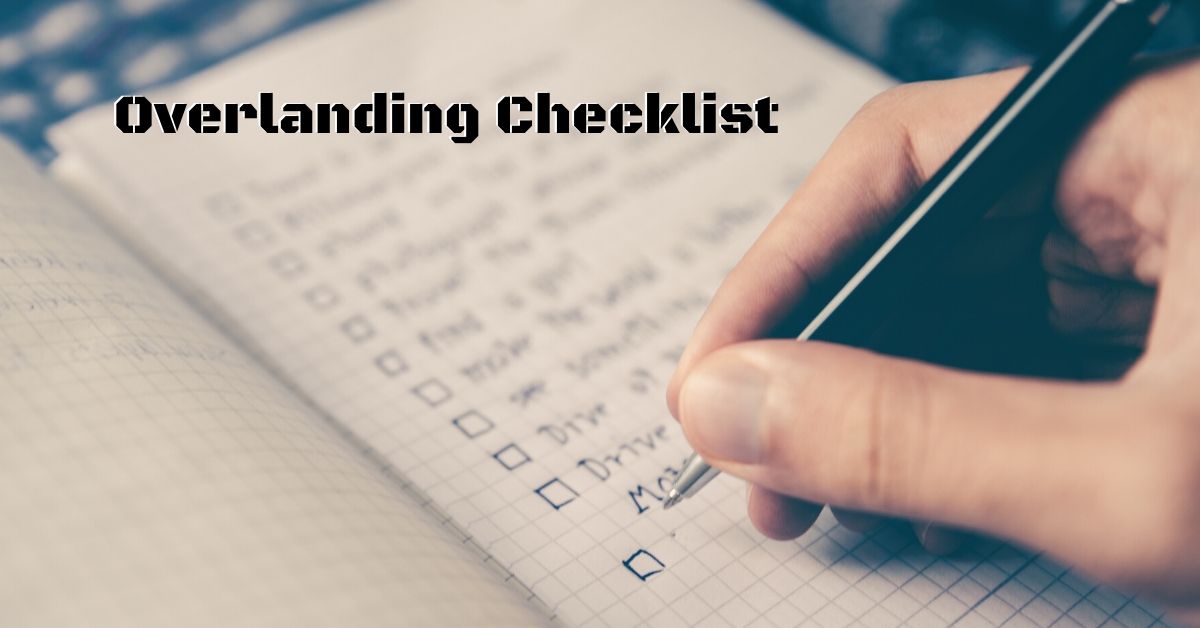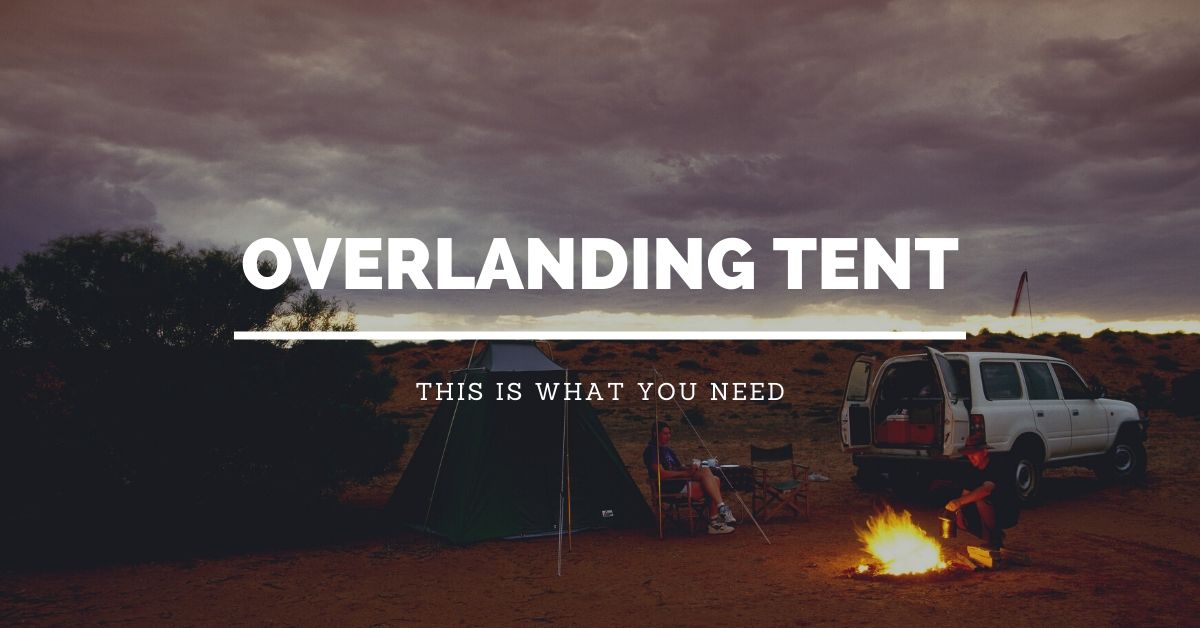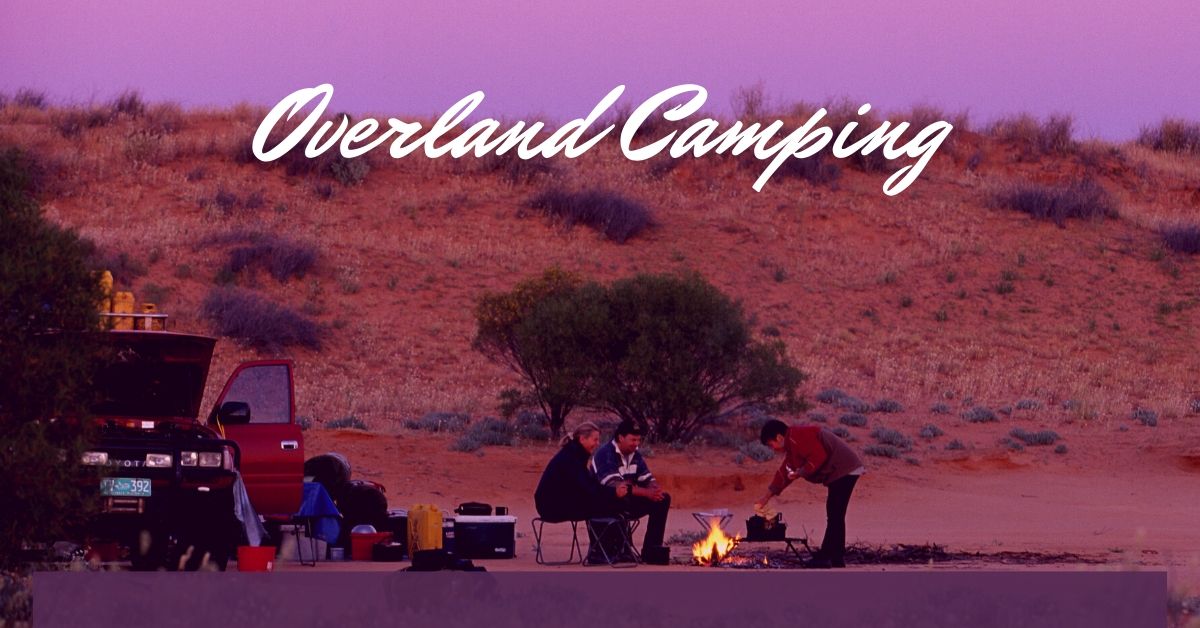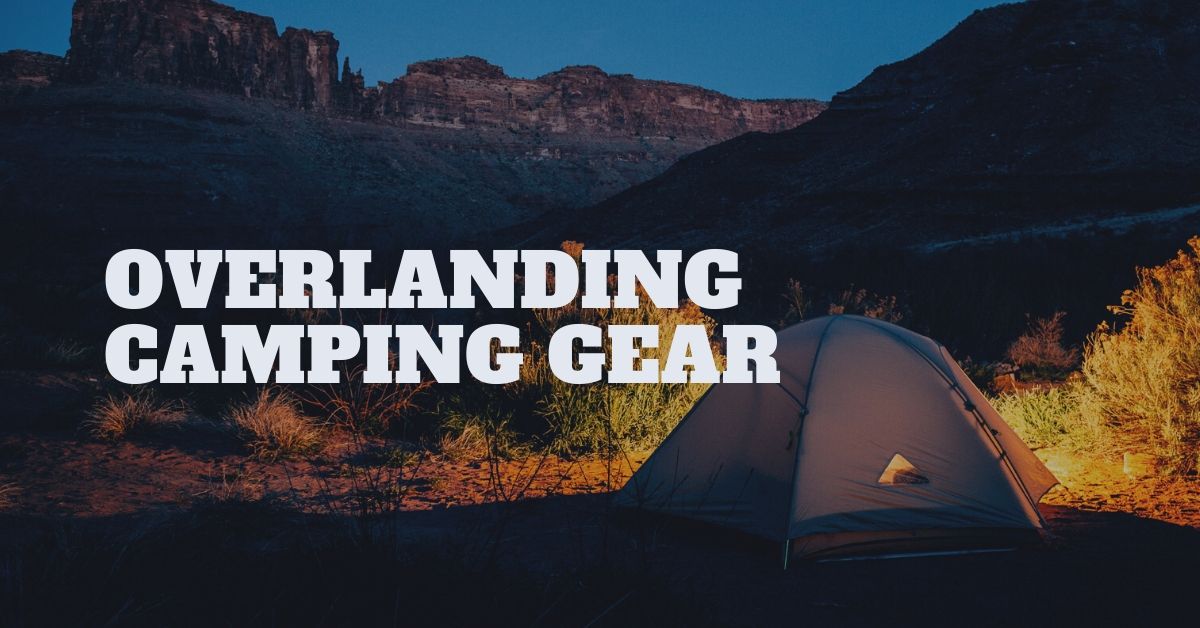OUTDOORS IDEAS TO COMBAT QUARANTINE STIR-CRAZINESS
As of this writing, the 2020 Coronavirus COVID-19 lockdown/quarantine is in full swing. Pretty much the entirety of the U.S. population has been stuck inside for the better part of a month or more…some almost two months Personally, my wife and I are able to work from home and our house is big enough so that we’re not constantly in each other’s faces, so we’re seemingly doing better than a lot of other couples we know. However, I know that my inner outdoorsman is positively SCREAMING to run out the door and catch fish, put the 4Runner in 4WD and climb hill trails, hit the shooting range and test handloads on new guns…JUST GET OUT.
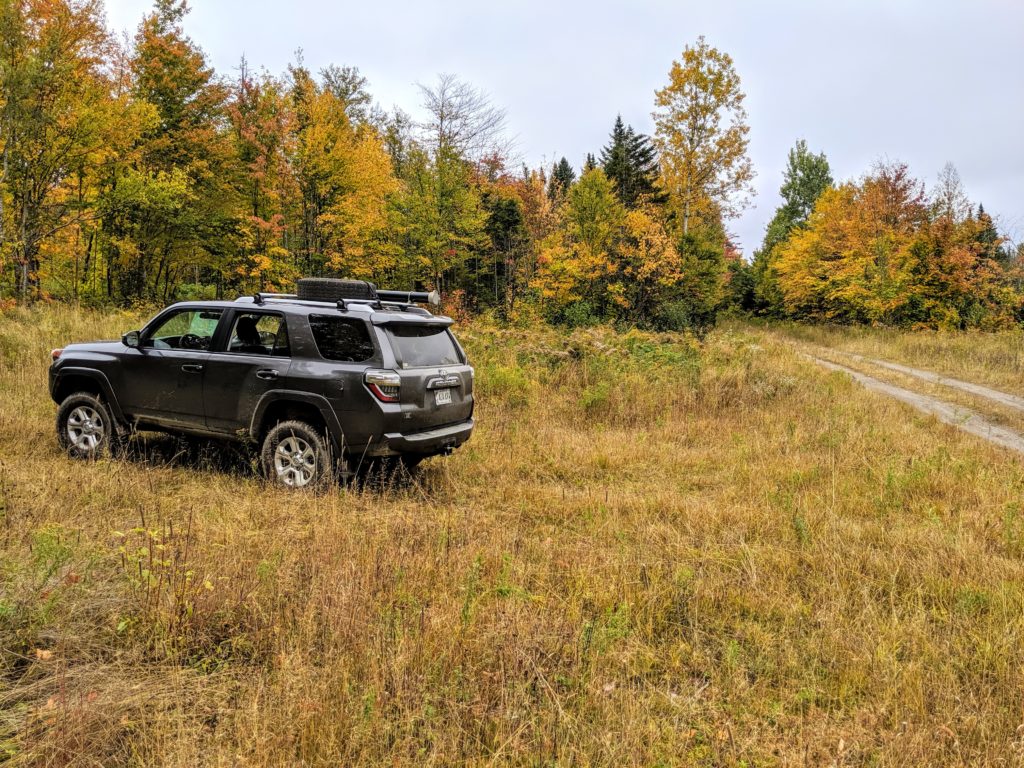
But I can’t. Well, I shouldn’t. Responsibility and courteousness to my fellow man is hailing on all frequencies, and I’m doing my personal best to stay inside and do my thing. I’ve tried to collect my son and go to my favorite secluded fishing spots – only to find that everyone else had the same inclination…apparently social distancing be damned! I’ve seen people lined up practically shoulder to shoulder on freshly-stocked trout streams, and other local out-of-the way bike or walking trails just loaded up with people. So I mumble under my breath and turn around to go home.
So, to that end, I’ve formed a list of ideas to help the beginner overlanding outdoorsman (one such as myself) learn basic skills and concepts to help them out once they can get out on the road. Learning or brushing up on these skills has been a joy and welcome distraction from the hills calling their sweet siren songs to me and my outdoor gear. All of these ideas can be implemented from the comfort of your own home or parking spot. Get to it!
LEARN BASIC LAND NAVIGATION
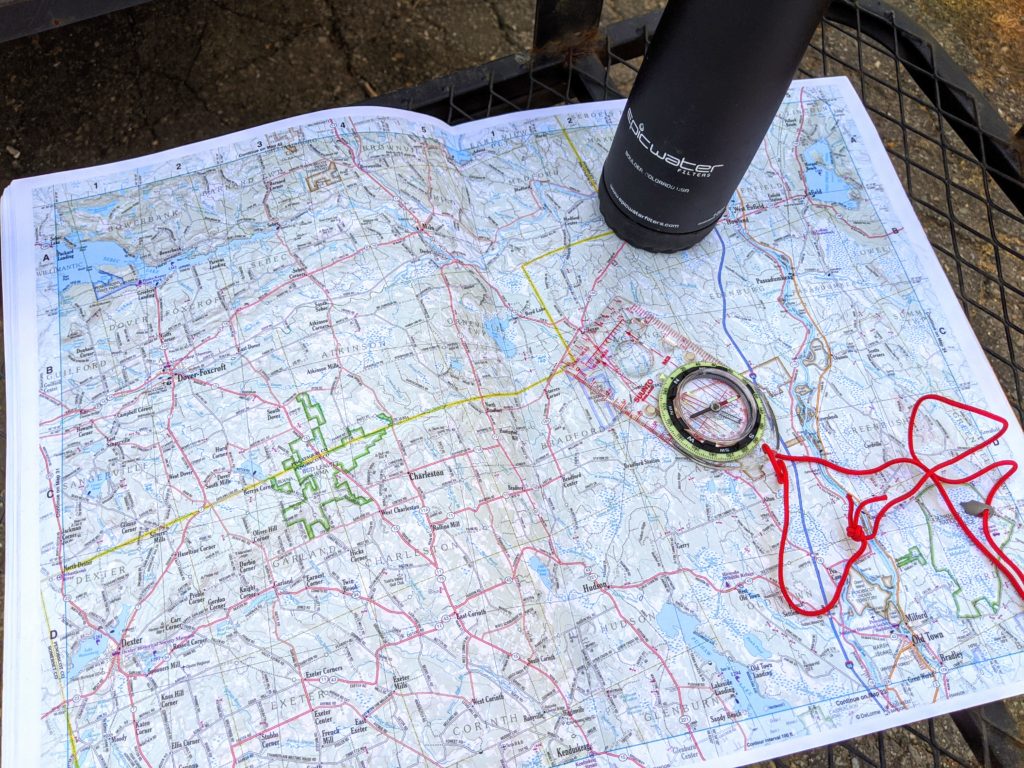
In this day of increasingly reliable and efficient GPS systems, map-reading and land nav skills are admittedly falling by the wayside. However, knowing your way around a topographical map and a good lensatic or baseplate compass can literally be a lifesaver when the chips are down and the batteries run out. The USGS has free topo maps for download available here . Get you a good compass (I like Suunto products myself), learn the basics of declination, direction,and distance, and wow the babes.
CLEAN YOUR CAR/TRUCK/VEHICLE
I know, I know – how is everyone going to know you’re into driving outdoors and mudding if you wash all the dirt off? Well Felicia, you can feel free to leave it on if you wish, but you should definitely give the underside of your vehicle a solid pressure-washing once in a while. All that mud you love so dearly may look super nifty and it makes such an obvious statement to the world, but it’s a great substrate to hold moisture and salt against the metal parts of your vehicle while encouraging rust and corrosion. A heavy mud layer also makes it brutal when you want to crawl underneath your vehicle for inspections of driveline and suspension parts or to perform maintenance. Dirt crumbles and drops into every orifice on your face and clogs up tools while obscuring problems. Do yourself and your mechanic a favor – blast that puppy down.
While you’re at it, take a few minutes and clean out your interior, organize your glovebox and consoles. If your stock of glove compartment Subway napkins and packets of Taco Bell Fire Sauce is low, fill ‘em back up if you have a supply on hand. Clean up the spilled coffee on the shifter boot. Wash your windows, mirrors, gauge cluster. Vacuum up the ground-in Cheez-Its and granola bar crumbs left behind by your kids. Wipe down your vinyl and plastic with a good cleanser and UV protectant. Clean all the dust and accumulated gunk out of the controls and buttons. Put the Barry Manilow CD back in the Barry Manilow CD box instead of stacking it in with the Kenny G CD in the Kenny G CD box. You’ll love yourself when you can finally get back into the vehicle once the lockdown is over.
LEARN HOW TO CHANGE YOUR OIL
A lot of standard vehicle maintenance is pretty easy, and learning how to perform it correctly can be a real money-saver. Learning how to change your oil is a biggie, since oil changes need to be done every few thousand miles if you want to keep your vehicle for any lengthy duration of time. Very few specialized tools are needed – newer vehicles like my 5th Gen Toyota 4Runner may need a specialized filter housing wrench – but generally a good ratchet, a set of sockets, oil filter wrench, and an oil catch pan will get you going on the majority of vehicles. Check YouTube for a video on how to change the oil on your particular vehicle – or better yet, get a Haynes or Chilton service manual.
Make sure you get the proper oil viscosity and quantity – your owner’s manual will tell you this information, and your auto parts store can help you get the correct oil filter. Once I know the oil viscosity and filter type, I’ll usually write this info in Sharpie underneath my hood for quick reference next time I go to AutoZone to pick up supplies to change my oil.
The oil you drain from your motor is recyclable – your local transfer station or auto parts store should be able to help. Old School pro tip: if you’re really into making a mess and protecting your vehicle from rust, you can brush your used motor oil onto your vehicle frame to help ward off corrosion. It’s a sloppy, drippy process but it works reasonably well – and it’s an essentially free rustproofing.
LEARN HOW TO TUNE UP YOUR VEHICLE
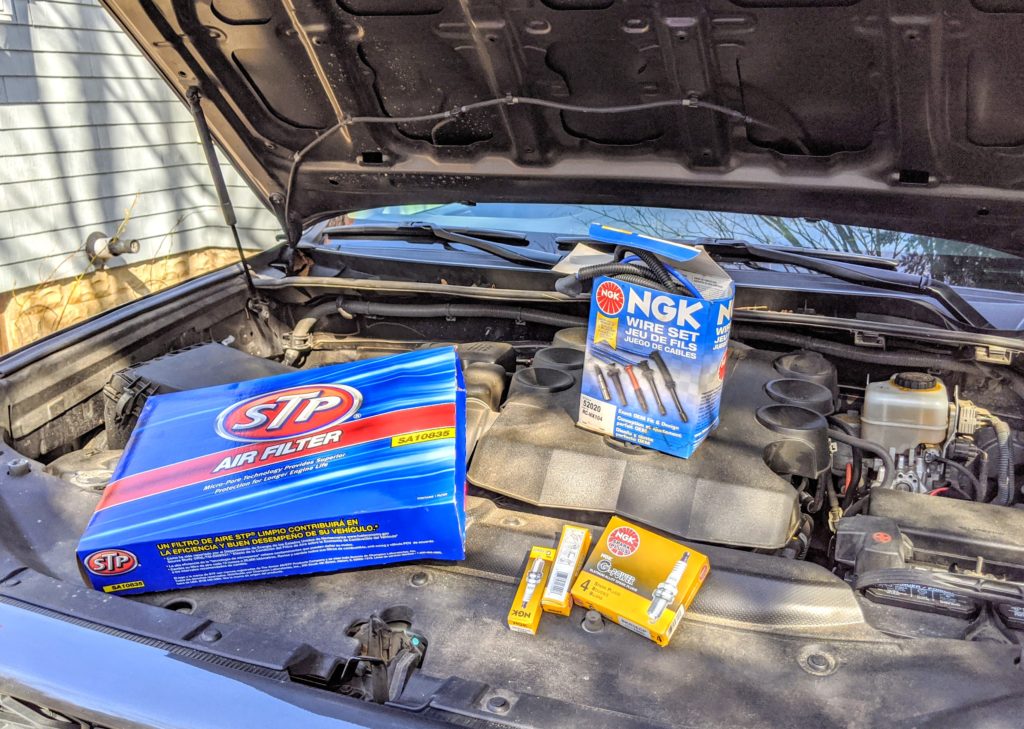
These days, vehicles can go for almost forever without needing a tune-up. However, at about the 75,000-100,000 mile mark you should be looking at new spark plugs and spark plug wires at a minimum. Older vehicles with distributors will need a new distributor cap and rotor. REALLY old vehicles will need new, properly-adjusted points. A new air filter and fuel filter will make your vehicle run happily and can improve gas mileage and power to boot. Usually, all these parts are relatively inexpensive and can be changed in the comfort of your own driveway with basic hand tools.
LUBE YOUR CHASSIS
Newer vehicles rarely need to be lubed or greased due to the prevalence of modern sealed bearings, universal joints, and suspension parts – but older vehicles really need a good old-fashioned lube job on occasion to keep these parts operating freely. If you go off-road frequently, dirt can collect in a really wild number of locations and wreak havoc; greased parts have it worse because the dirt and debris gets stuck in the grease and causes premature wear.
Ball joints, bushings, steering links, U-joints, hinges – all these parts may have zerk fittings for a grease gun. Lubing is about as simple as it gets: Stick the nozzle of the grease gun on the zerk fitting, and pump new grease in until the old grease oozes out. Wipe away the excess and move to the next fitting.
Grease guns are cheap and a great tool to have. Look for synthetic greases if you can, but if it’s not available, good ol’ chassis grease still works well.
LEARN HOW TO REALLY SHARPEN A KNIFE
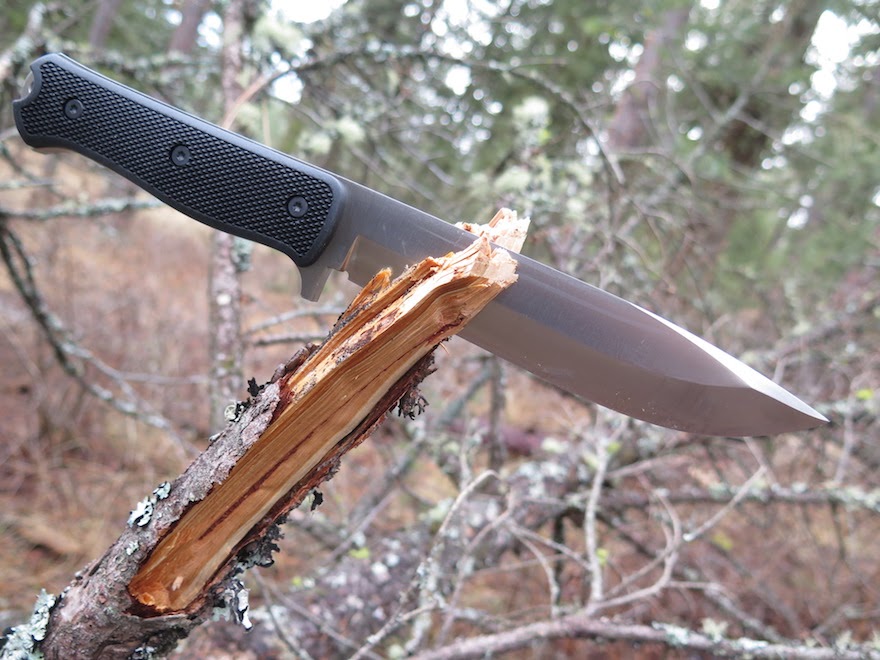
A really good knife is a gift from the heavens when you need it. Learning to keep it REALLY sharp is a gift from yourself to yourself. There are thousands of knife sharpening systems out there – I like Work Sharp for touching up while I’m on the go, and I have Arkansas stones and a Smith sharpening system for working at home. Using these properly isn’t that hard, but definitely takes time, skill, and patience. Buy a decent sharpening system and learn the magic of sharpening and honing….even stropping if you feel saucy. Note: different blade designs and profiles dictate different sharpening methods! I learned this fact the hard way while sharpening a beautiful Fallkniven A1x survival knife. I left scratches on the blade that surely made Doc Montana wince and curse my name. Sharpening a really good knife the wrong way is kinda like waxing a Bugatti with a sandy rag: the job gets done, but you’ll probably hate yourself and the end result.
LEARN HOW TO PROPERLY APPLY A TOURNIQUET
If you need a tourniquet – I mean REALLY need it – right then and there isn’t the best time to pull the TQ out of the package and figure out methodology. You (and everyone you know) should be versed in tourniquet application technique. Get yourself a few CAT (Combat Application Tourniquet) TQs and watch out for counterfeits – you should be spending $30 or more per tourniquet. Practice, practice, practice! A properly-applied tourniquet will hurt like absolute burning hell but you really need to try it yourself. Don’t wing it – check out the American Red Cross website for training on how to properly use a TQ. Also, don’t fly blind – it could mean your life! Practice putting a tourniquet on one-handed, weak-handed, in the dark, etc. Teach others around you how to use a tourniquet as well in case you’re not coherent enough to self-apply when needed.
ORGANIZE YOUR TOOLS AND UPGRADE AS NEEDED
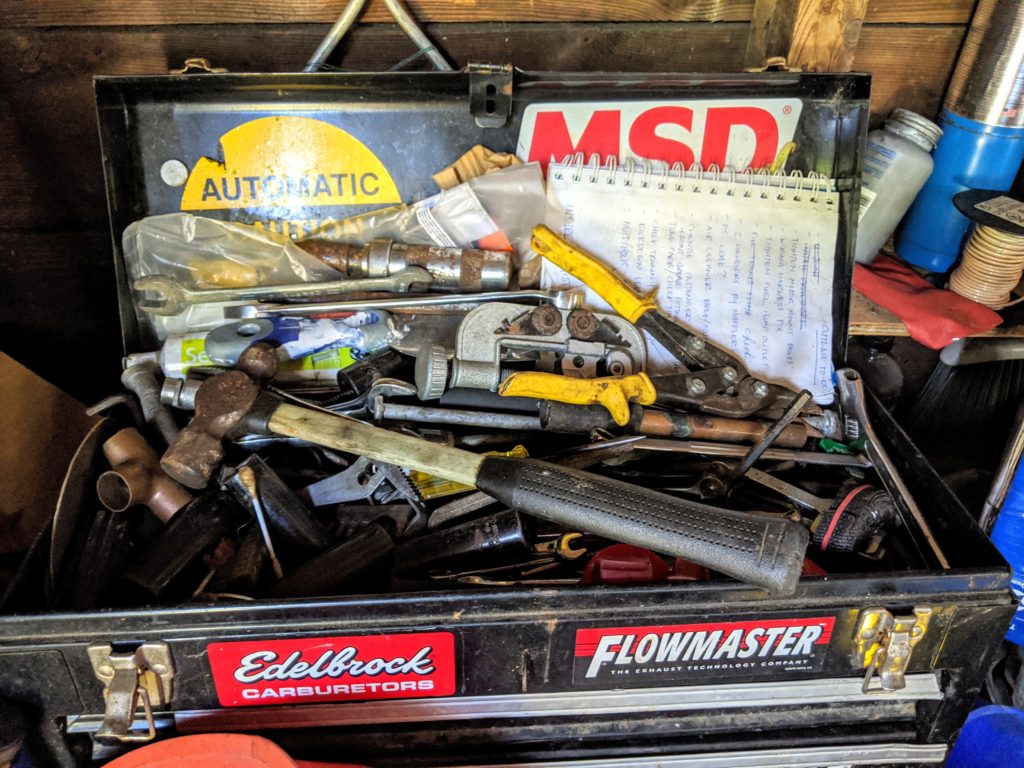
If you’re anything like me, your overlanding and camping tools started out magnificently organized. However, due to attrition, the physics of bouncing around trails, haste, and just plain volume of use, my tools often get scattered about or tossed back in the toolbox to be addressed and sorted at a later date. Well, guess what? That later date is NOW. Get a solid toolbox (I dig US military .50 Caliber ammo cans as general purpose toolboxes), socket racks, tool bags and tool rolls, and get organized! Find what’s missing and replace. Get a tool list together for inventory purposes.
Also read: Overlanding Recovery Gear
If you’ve been using that wretched Chinesium adjustable wrench with the floppy jaw and awful worm gear, upgrade it. Individual tools are not terribly expensive by themselves, and gradually upgrading them one at a time as budget allows is a great way to improve the entire tool arsenal. Make a list of substandard gear to replace. Steer away from the NAPA $5 bargain bins and Wal-Mart junk. Overlanding tools have this innate peculiarity where they absolutely must work when they’re needed; any compromise or failure is unacceptable. Cheapo gear chooses the most desperate moments to give up the ghost. Over a 30 year career of working on cars and trucks, I’ve learned this fact the hard way. Pawn shops are a great place to look for used quality tools and gear, just a tip from your buddy Drew.
LEARN HOW TO USE A MULTIMETER
A multimeter is one of those tools you never knew you needed until you had one. I’ve got simple current checking tools – basically a ground, a light bulb, and a spike to drive into wires to ascertain whether or not the line I’m working on is hot and has current. That’s all well and good, but a properly-applied multimeter will provide much more information than just a blinking light bulb. You can use a multimeter to check resistance in a circuit, the voltage of your battery, the charging voltage of your alternator, the draw on the charging system…the list goes on and on. A cheap but decent multimeter can be had for about $25; a good one will run you about $40. This tool is worth every stinking penny when you’re troubleshooting an electrical system that has left you stranded out of cellphone range.
IMPROVE YOUR PHYSICAL FITNESS
This one is simple. Being stuck at home is a great opportunity to get healthier. Watch your calorie intake and start doing some pushups and burpees; maybe hit the elliptical machine or treadmill if you have one. You’ll hate yourself for a few days but you’ll become acclimated. Physical fitness will improve everything about your life and a basic exercise regimen doesn’t soak up much time. No better time than now!
LIGHT RUST REMOVAL
When I bought my 4Runner, I found via discussion with the dealership who took it in trade that the truck had been owned by a well-to-do couple who lived basically on the Atlantic coast. As a consequence, the frame welds and other areas were exposed to oceanic salt spray and started to prematurely rust. Everything is structurally very solid (wouldn’t have bought it if it wasn’t!) but to keep things from getting worse, I’ve taken to addressing the frame surface rust now. A wire wheel attachment on a drill, sandpaper, and steel wool are great places to start for scuffing loose rust off. A good rust converter followed by a high quality paint such as POR-15 or Eastwood Chassis Black is a great way to seal up rust. Once the coatings are cured, finish the whole shebang off with Fluid Film. Your rig is protected from the elements for at least a year (which is the suggested re-touching interval for Fluid Film.) Your vehicle will thank you!
READ MORE!
There are literally thousands of great titles on overlanding, camping, vehicles, repair, hunting, fishing, rock climbing – you name it! Download some interesting books on your cellphone or tablet via the Amazon Kindle App – you’ll find that many of them are free or just a couple bucks.
INSPECT YOUR GEAR!
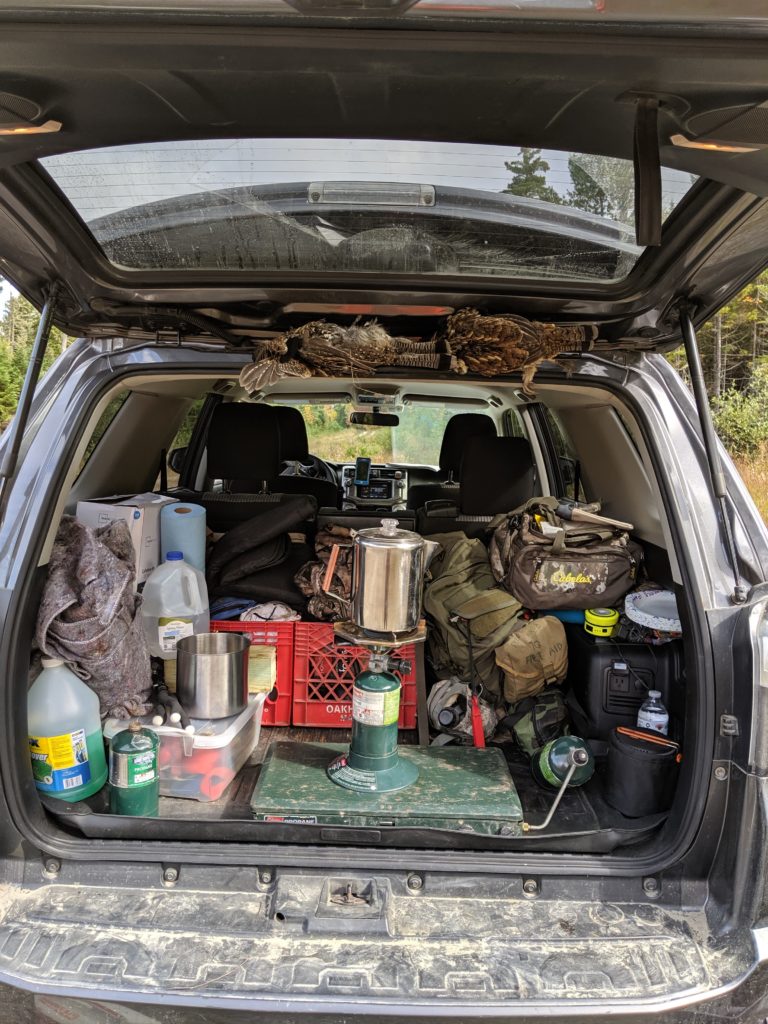
You’re not doing anything. Neither is your gear. Now is the perfect opportunity to drag out all your goodies – yes, ALL of it – and inspect it carefully. Look for rust on tools. Make sure your ratchets work smoothly in both directions. Be sure your Vise-Grips aren’t rusted shut. Be sure you have plenty of Zip-ties. Review your Come-Along and snatch blocks to ensure the steel cable isn’t frayed or splitting or the ropes aren’t coming apart. Check your traction pads for cracks. Sharpen your chainsaw blade and your axe. Review your tires’ tread condition, sidewall integrity, and air pressure. Function test your defensive firearms and clean debris out of them. Re-line the reels on your fishing gear. Hit your door hinges with white lithium grease.
You get the picture. There’s SO MUCH STUFF that builds up and becomes part of your everyday life, or perceived future need. Now is the time to check it over and make sure that it’s well cared for and functioning at 100 percent. Make sure any issues with the gear you laid down your hard-earned dead presidents for is cared for and squared away – and that gear will take care of you when the chips are down.
